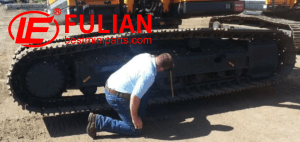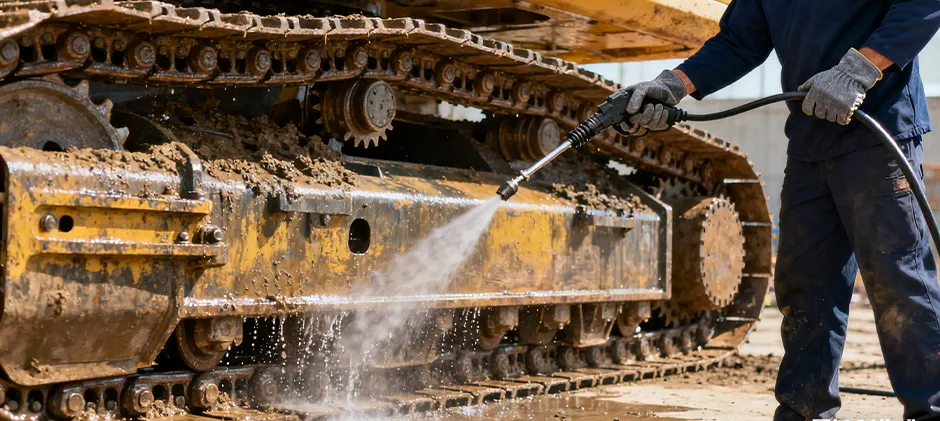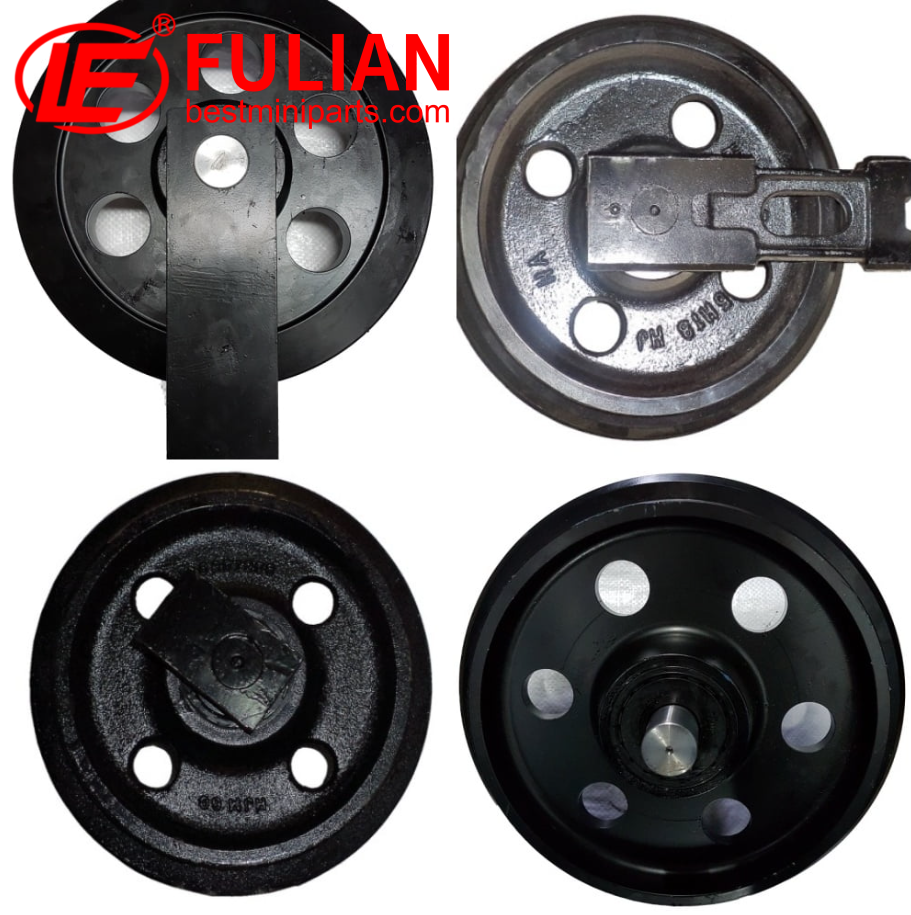1. Track Slippage
One of the most common signs of a failing track tensioner is track slippage. If the tracks on your excavator frequently slip or come off the rollers, it indicates that the tensioner is not maintaining the correct tension. This can lead to increased wear and tear on the tracks and undercarriage components.
2. Uneven Track Wear
Inspect the tracks for uneven wear patterns. If you notice that one side of the track is wearing out faster than the other, it could be a sign that the track tensioner is not functioning properly. This uneven wear occurs because the track is not aligned correctly, causing one side to bear more load.
3. Unusual Noises
Listen for unusual noises such as clunking, grinding, or squeaking coming from the undercarriage. These noises can be indicative of a loose track or damaged components resulting from a faulty tensioner. Regularly operating the excavator with these noises can exacerbate the problem and lead to more significant damage.
4. Visible Damage to the Tensioner
Perform a visual inspection of the track tensioner. Look for signs of visible damage such as cracks, leaks, or bends. Hydraulic tensioners, in particular, may show signs of oil leakage if the seals are damaged. Physical damage to the tensioner can severely impact its ability to maintain proper track tension.
5. Difficulty Adjusting Track Tension
If you find it challenging to adjust the track tension manually, this could be a sign of a problem with the tensioner. In some cases, the tensioner might be stuck or not responding correctly to adjustments, indicating an internal failure.
6. Frequent Track Adjustments Needed
Needing to frequently adjust the track tension is another sign of a failing tensioner. Under normal circumstances, track tension should remain relatively stable. If you constantly need to adjust the tension to keep the tracks tight, the tensioner is likely not holding the tension correctly.
7. Machine Handling Issues
Noticeable changes in how the excavator handles, such as difficulty in steering or maintaining straight lines, can also be symptoms of a track tensioner issue. Proper track tension is essential for the smooth and efficient operation of the machine, and any deviation can affect its handling.
8. Hydraulic Pressure Loss (For Hydraulic Tensioners)
In hydraulic track tensioners, a drop in hydraulic pressure can indicate a problem. This can be checked using the machine’s diagnostic tools. If there is a consistent loss of hydraulic pressure, it suggests that the tensioner is unable to maintain the necessary force to keep the tracks tight.
9. Increased Wear on Sprockets and Rollers
If you observe that the sprockets and rollers are wearing out faster than usual, it could be due to improper track tension. The increased stress from a loose track can cause these components to degrade more quickly.
10. Visual Indicators of Track Sagging
Lastly, visually inspect the track for sagging. A properly tensioned track should have minimal sag when the machine is stationary. Excessive sagging indicates that the tensioner is not maintaining the correct tension, which can lead to the aforementioned issues.
Conclusion
Keeping an eye on these symptoms can help you identify a failing track tensioner early, preventing more significant damage and costly repairs. Regular maintenance and prompt attention to any signs of tensioner failure are essential for the longevity and efficiency of your excavator. If you suspect your track tensioner is failing, it is advisable to consult with a professional technician to assess and address the issue promptly.
Fulian Operation Team
2024.8.30








